
Celaenorrhinus ambareesa, commonly known as the Malabar spotted flat, is a species of hesperiid butterfly found in India.
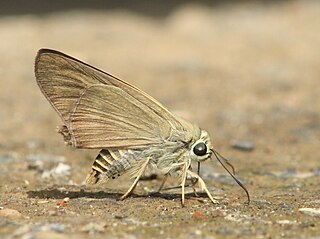
Badamia exclamationis, commonly known as the brown awl or narrow-winged awl, is a butterfly belonging to the family Hesperiidae. It is found in south and southeast Asia, Australia, and Oceania.

Bibasis gomata, commonly known as the pale green awlet, is a butterfly belonging to the family Hesperiidae. It is found in Northeast India, the Western Ghats and parts of Southeast Asia. The butterfly was reassigned to genus Burara by Vane-Wright and de Jong (2003) and is considered by them to be Burara gomata.

Burara jaina, the orange awlet, is a species of hesperid butterfly found in Asia. The butterfly was reassigned to the genus Burara by Vane-Wright and de Jong (2003), and is considered Burara jaina by them.

Hasora badra, the common awl, is a butterfly belonging to the family Hesperiidae, which is found in India.

Cupitha is a genus of butterflies in the family Hesperiidae. It is monotypic, being represented by the single species Cupitha purreea, commonly known as the wax dart.

Gangara thyrsis, commonly known as the giant redeye, is a species of butterfly belonging to the family Hesperiidae. It breeds on a number of palm species.
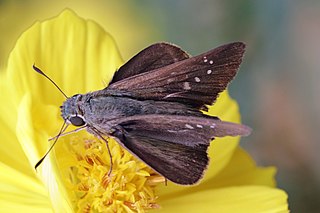
Pelopidas agna, the obscure branded swift or dark branded swift, is a butterfly belonging to the family Hesperiidae found in India.

Quedara basiflava, the yellow-base flitter or golden flitter, is a butterfly belonging to the family Hesperiidae and is endemic to India's Western Ghats.
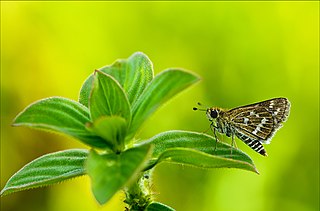
Taractrocera maevius, the common grass dart, is a species of butterfly belonging to the family Hesperiidae. It is found in India, Sri Lanka and Myanmar.

Gerosis bhagava, also known as the common yellow-breast flat, is a species of butterfly in the family Hesperiidae.
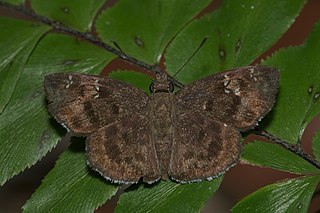
Sarangesa dasahara, also known as the common small flat, is a species of butterfly in the family Hesperiidae. It is found in the Indomalayan realm.

Spialia galba, the Indian grizzled skipper, is a hesperiid butterfly which is found in South Asia and parts of Southeast Asia.
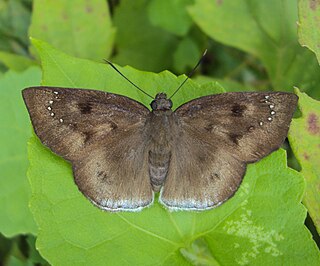
Tagiades gana, the immaculate snow flat, large snow flat or suffused snow flat, is a butterfly belonging to the family Hesperiidae found in Indomalayan realm.

Hyarotis microstictum, the brush flitter, is a butterfly belonging to the family Hesperiidae. It is found in the Indomalayan realm and in South India. H. m. coorga Evans, 1949 is the subspecies found in South India. H. m. microstictum is the subspecies found in the Indomalayan realm.

Hasora anura, the slate awl, is a species of hesperid butterfly found in Asia. In India it is found in Sikkim and the Khasi Hills.

Gangara lebadea, commonly known as the banded redeye, is a species of hesperid butterfly found in Southeast Asia.
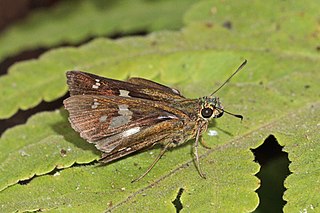
Polytremis eltola, the yellow spot swift, is a species of skipper butterfly found in the Indomalayan realm.

Zographetus ogygia, the purple spotted flitter, is a butterfly belonging to the family Hesperiidae.

Halpe zema, the zema banded ace, is a species of skipper, a butterfly belonging to the family Hesperiidae. It is native to Nepal, India, and Myanmar.




















